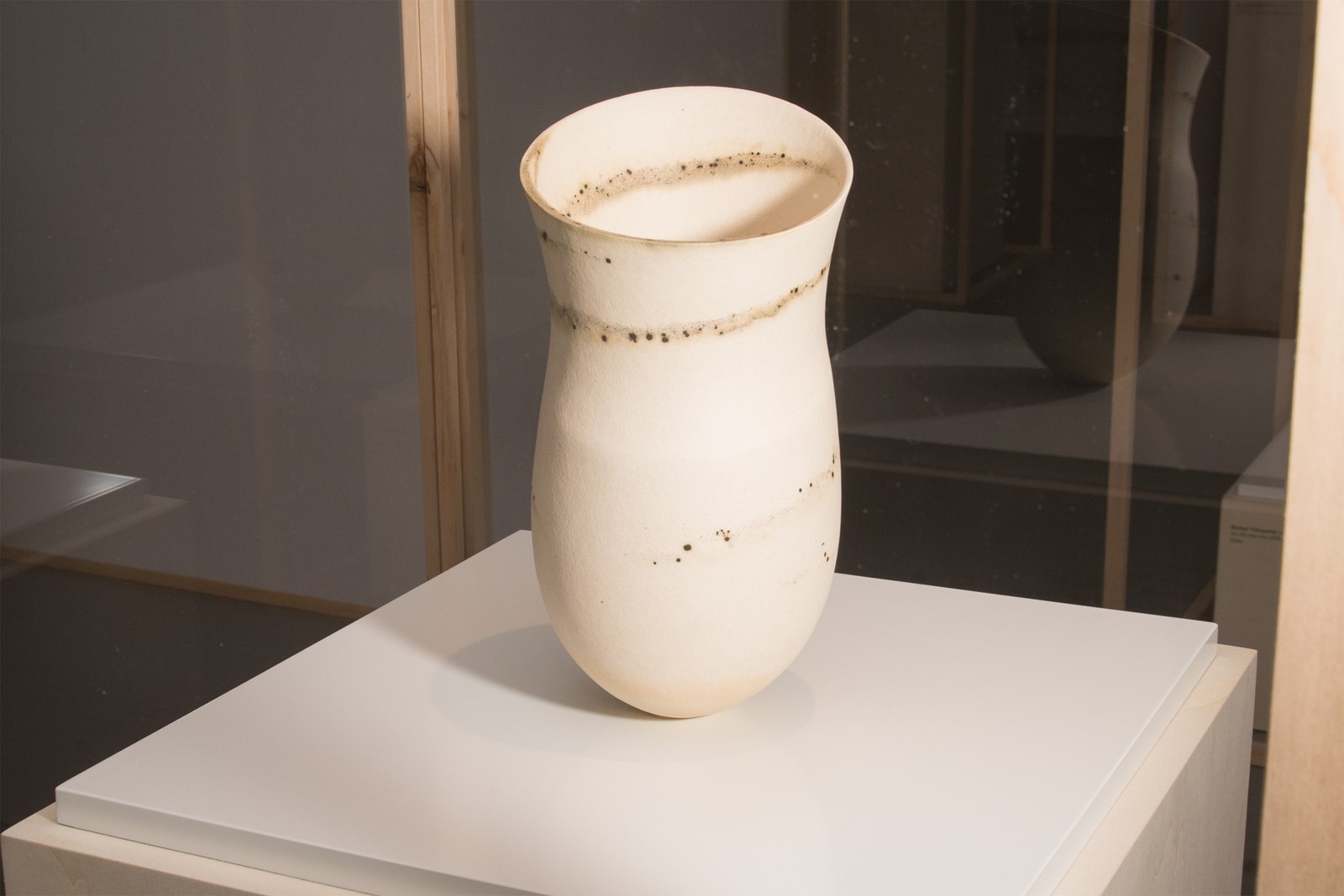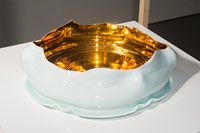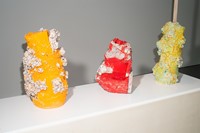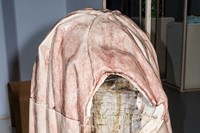London’s statuesque Design Museum, which reopened 18 months ago at its Kensington site (previously the long-abandoned Commonwealth Institute) after an extensive development, has the feel of an upturned vessel to it. Its multifaceted ceiling, a complex form dictated by the hyperbolic paraboloid roof it lines, looks like it would be smooth to the touch – like if you were to press your fingers against its sides you could flip the building right-way up again, and fill it with liquid. A beautiful and unexpected bowl.
The wonder of this building’s structure is not only reason the museum is such an apt venue for the second edition of the Loewe Foundation’s Craft Prize, but it is, nonetheless, a satisfying one. Up the John Pawson-created stairs on the second floor, a collection of works by 30 craftspeople from no fewer than 18 different countries sit in straight lines in a room that smells like warm wood. They range from glassware and textiles to jewellery and ceramics – vessels included – and they are here because Jonathan Anderson, when he joined Spanish house Loewe as creative director four years ago, was hungry to support craft in a tangible and modern way.
“We don’t have to make it nostalgic,” he tells AnOther, after the winner of the 2018 prize is announced by a visibly moved Dame Helen Mirren to a room of waiting finalists. “I hated all these images of a man sewing in a dark room. It was very Rembrandt, and it was very brown, and it was very heavy.” Instead of glorifying what the house was already doing in its workshops, he sought to create a practical platform through which to enable like-minded makers in their own worlds for the future. “I was trying to think, how can we help people – like we do those who are making our leather goods – who have to do it on their own? How can we help them to tell their story, or to be able to communicate what they’re about? My whole vision was about how we engage people of all demographics, and show people different ways of looking at form.”
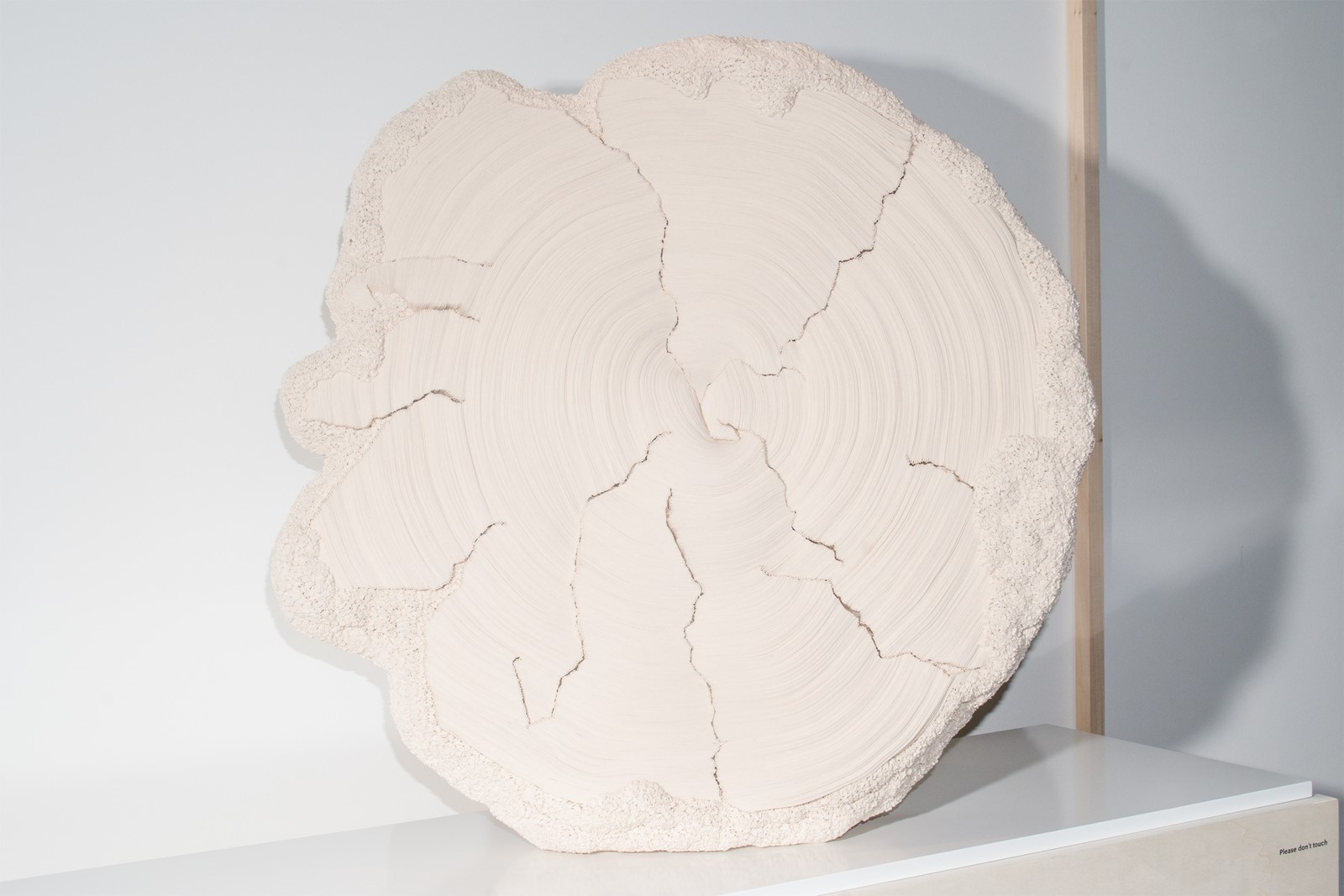
Craft has long been front and centre of what Anderson does – both at Loewe and at his eponymous brand. Crocheted woollen threads, patchworked textiles, intricately woven rugs and photographs printed at an enormous scale all slot effortlessly into his universe to paint a cohesive picture; indeed, it’s only in their juxtaposition that he finds meaning. “I love taking 20 different things and banging them together,” he says. “I like classicism meets modernity. I like male versus female. I like contradictions that work. I like one thing one minute, and then I like to break it. I work through conflict.”
“I like classicism meets modernity. I like male versus female. I like contradictions that work. I like one thing one minute, and then I like to break it” – Jonathan Anderson
It’s a resolution he came to most decisively after the curation of his Disobedient Bodies show at West Yorkshire’s Hepworth Wakefield 18 months ago, he continues. The show was underpinned by the respective clashes and collisions of different creative ideas, eras, media, from the ten-foot-tall knitted jumpers that hung from the ceiling in one room, their arms intertwined, to Magdalene Odundo ceramics, and pieces from Comme des Garçons’ now iconic S/S97 Body Meets Dress, Dress Meets Body collection in the next.
“I think that was an awakening for me,” he says. “I love art and I love making things, I love objects. And when I did this show, it made me understand what I do – that actually, when you put all creative ideas into a melting pot, how good that cross-pollination is. It’s good to collaborate, it’s good to talk to each other. It’s good to go see different artists. Yes, you can ‘like’ a picture, but if you actually go and see and feel it, it’s more exciting. You actually have an emotional connection to things. I think it’s important that we are more emotional.”
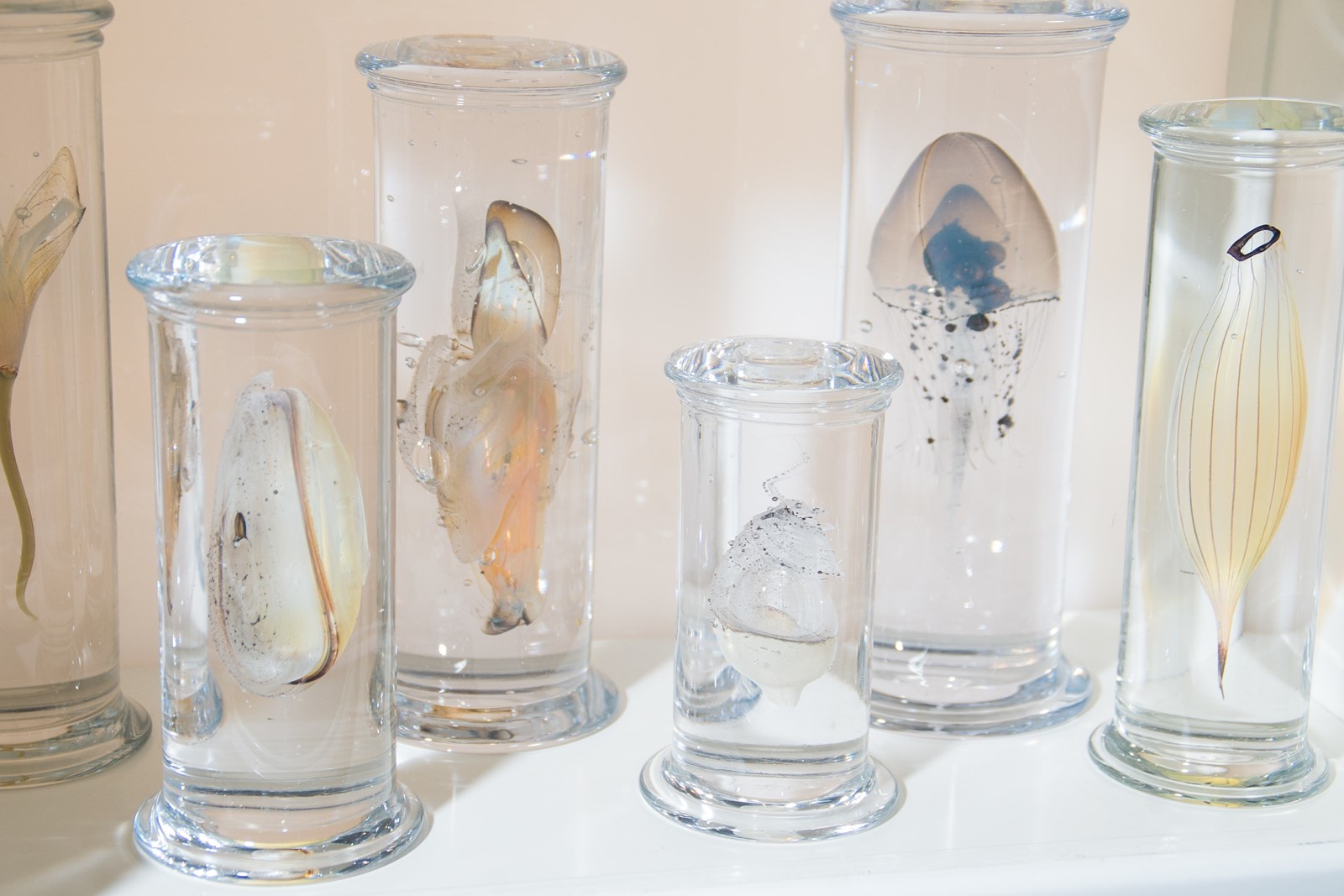
Which brings us neatly back to the prize itself – craft being essentially the expression of emotion through the hands. Its 2018 winner is Jennifer Lee, whose piece Pale, Shadowed Speckled Traces, Fading Eclipse, Bronze Specks, Tilted Shelf, is a kind of paean both to time and timelessness. It is a softly voluptuous form – a lilting curve of smooth natural earthenware interjected with ellipses of speckled clay that Lee first made up 30 years ago, and had left to mature since before using. “Pinching is a really ancient technique,” she explains. “I’m using basic materials; water, clay and oxides… I discovered by accident that things can alter and change over time.” Nonetheless, the piece itself feels powerfully contemporary – perfectly in tune with our perpetual hunt for meaning outside of a digital society. It’s tactile and tangible, and both forward-facing and indebted to its own history.
In which respect, it hits the nail on the head for what Anderson and his fellow jury members and elected panel of experts, were hoping for from the prize. Its impact reverberates both through the museum’s imposing structure, and through the worldwide community of makers invited to take part in it – crucially, anybody can enter.
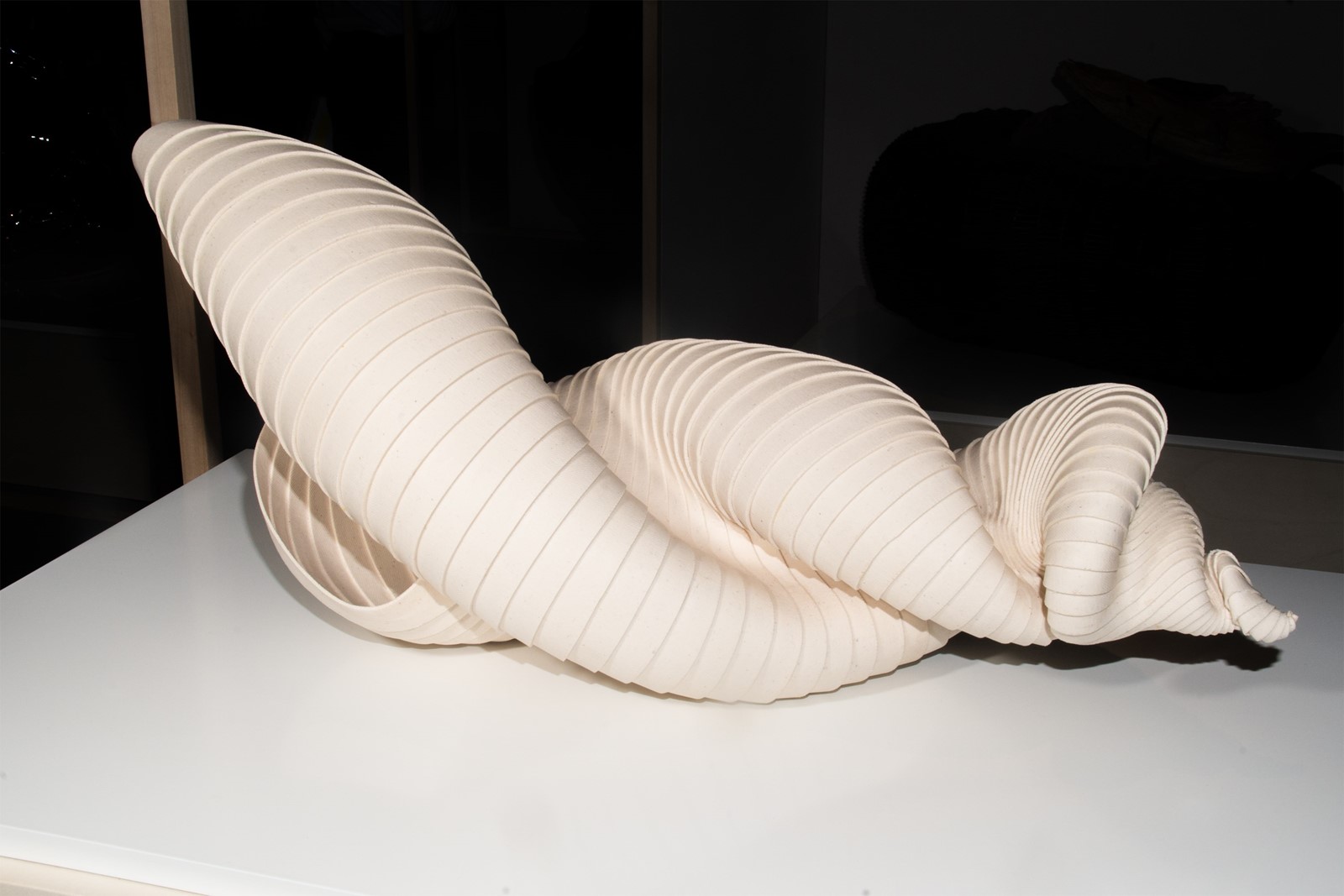
As for the impact of the prize on Anderson’s own practice? “I think it’s actually made me more humble, somehow,” he says. “I work 24 hours a day, and I’m in two countries every week – sometimes four. And this keeps me on the ground. I’ve never gone in for doing something for a fad, or for short term – I hope to be here for a lot longer in what I do, and what I’ve realised doing this project is that there are people out there who design in the dark. It may take until they’re 80 for them to be known, and it’s fantastic that life is like that. I have learned that speed is good, but at the same time you cannot build overnight. Sometimes you have to learn the craft, you’ve got to take the time.”
The Loewe Craft Prize 2018 runs until June 17, 2018, at the Design Museum, London.
